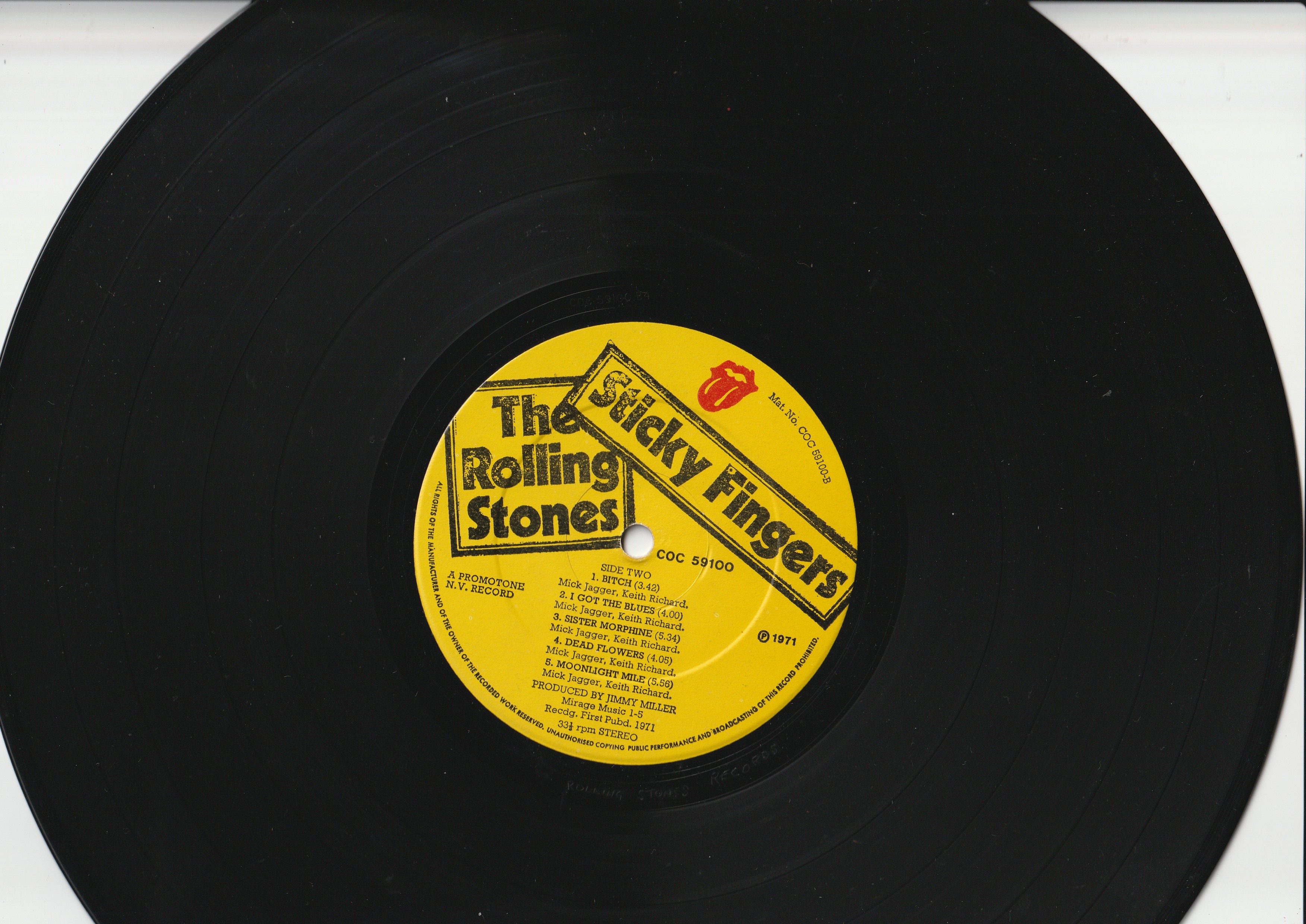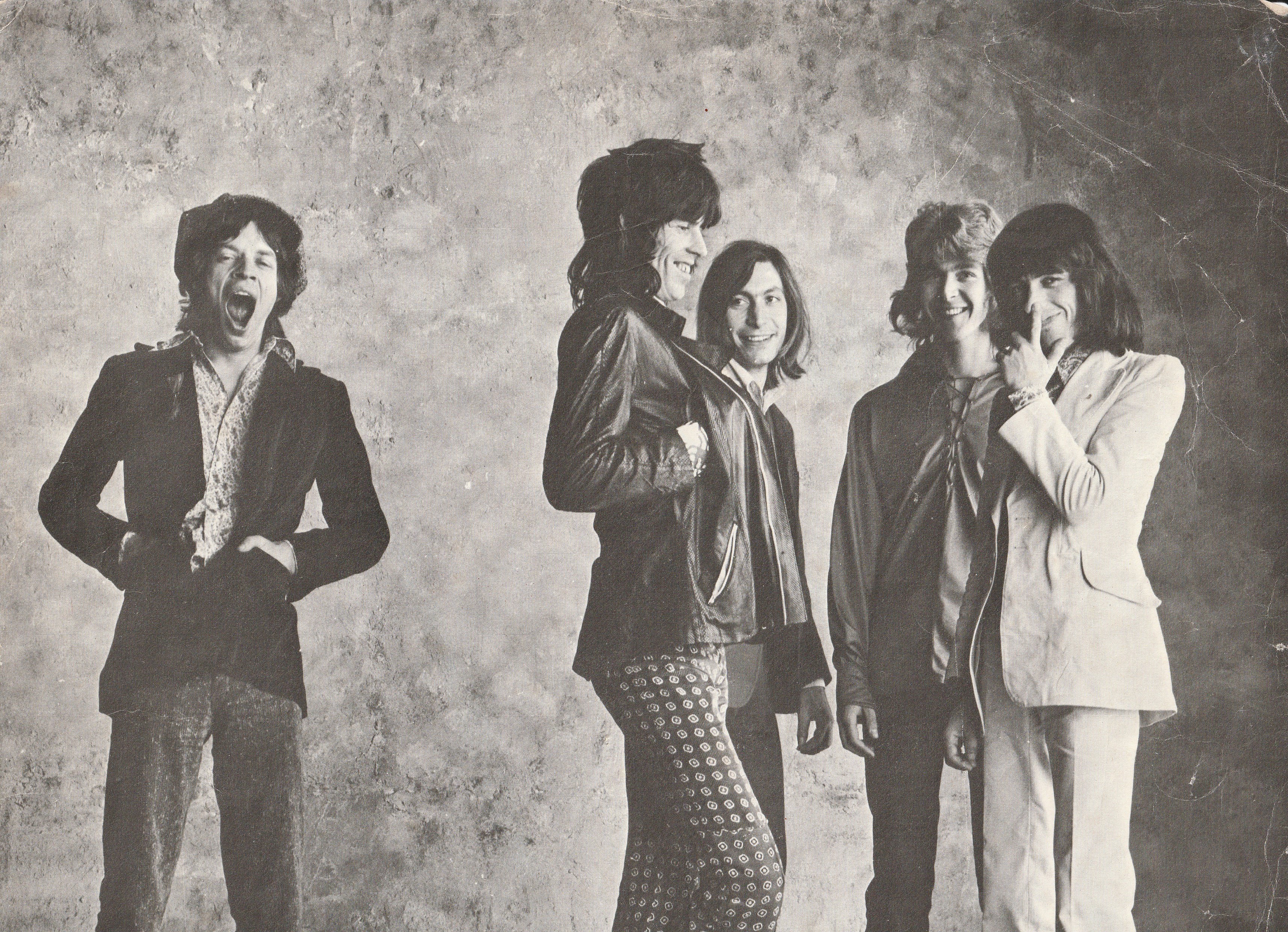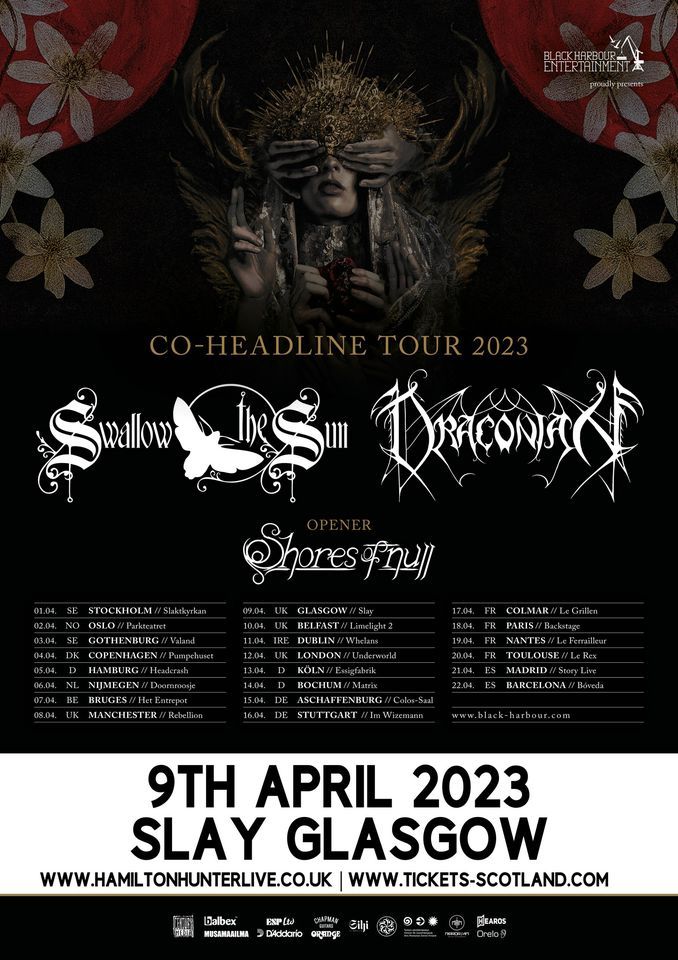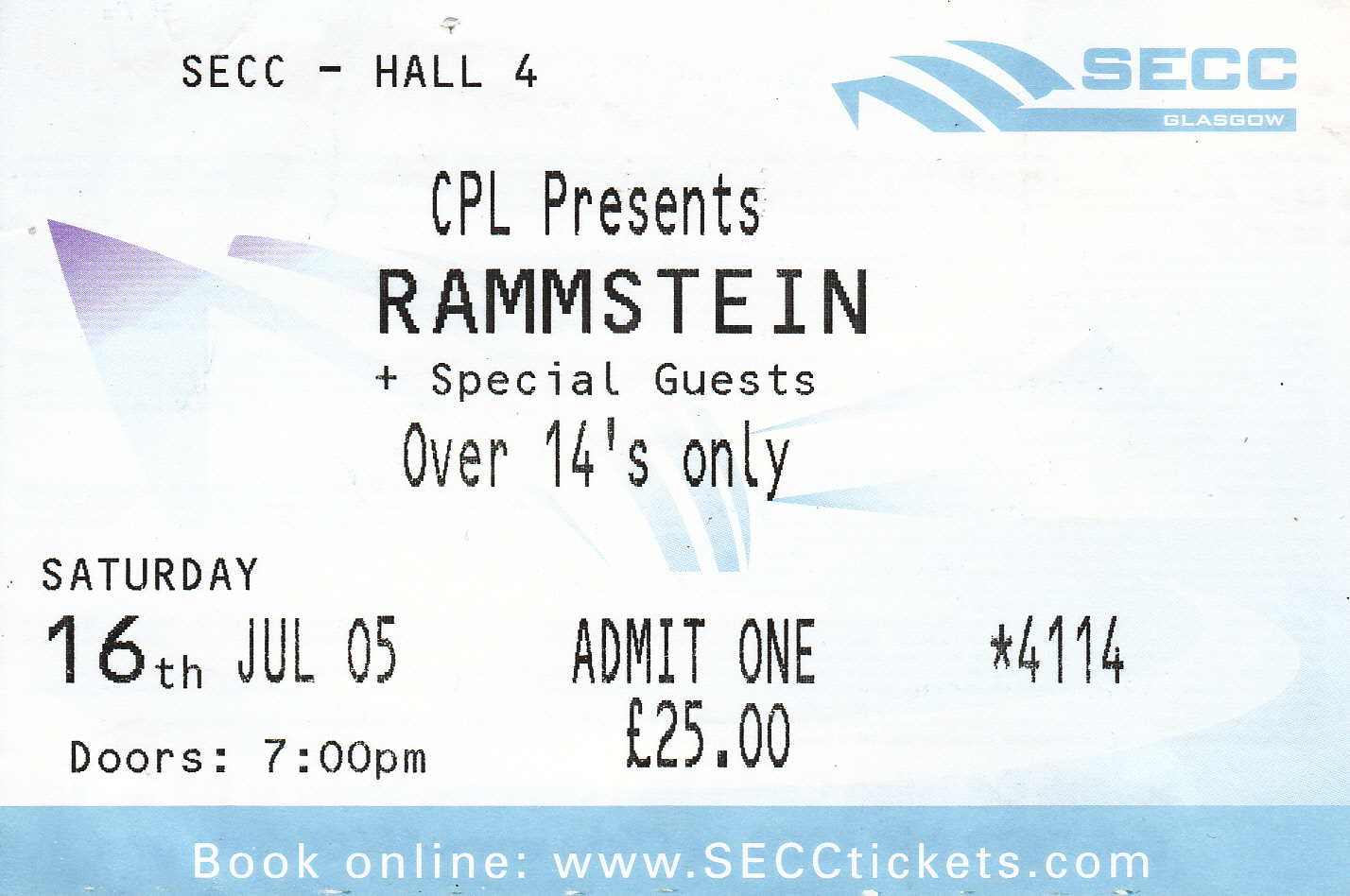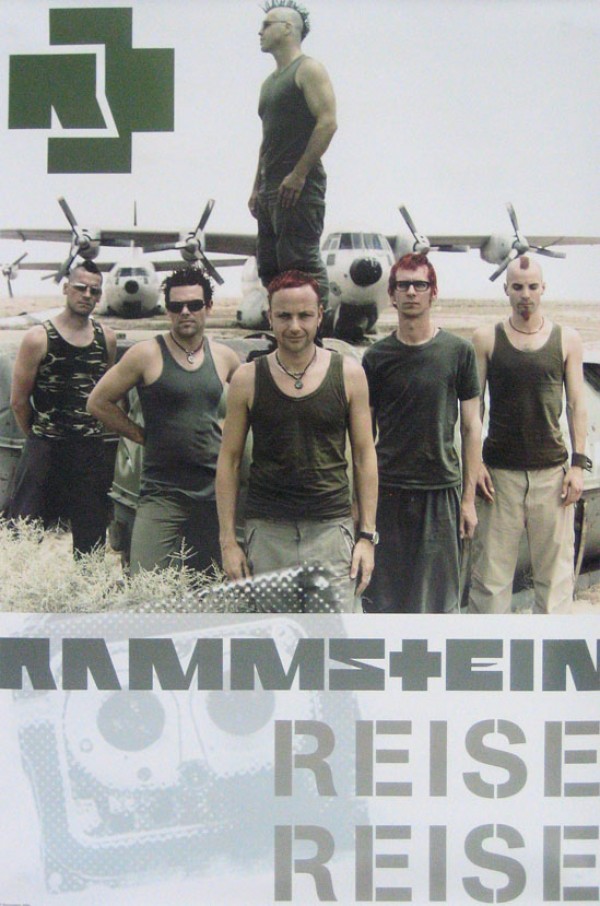Jarboe live in Newcastle 2022, Michael Gira live in Glasgow 2022 and Swans live in Glasgow 2023
 This was part of some kind of pilgrimage for me, four acts of a very strange play, acted out over ten months, with its roots deep in the past and focus on an unknown dystopian future…To understand it, we have to go back to the Swans period between the late 1980s and the late 1990s, a time when performance artist Jarboe was Michael Gira’s co-collaborator and lover. From ‘Children Of God’ through to ‘Soundtracks For The Blind’, the fires of creativity were burning brightly in New York City. Jarboe and Gira’s ‘side project’, initially called Skin, then World Of Skin, also produced some wonderful material, the 1990 album ‘Ten Songs For Another World’ being my favourite. It’s a cornucopia that I often revisit, for musical and spiritual nourishment…Here is my recollection of a timeline of a series of somewhat disparate, but somehow connected, events that took me from autumn 2022 through to the end of summer 2023, a journey that takes us to post-industrial landscapes on rivers running through northern cities…
This was part of some kind of pilgrimage for me, four acts of a very strange play, acted out over ten months, with its roots deep in the past and focus on an unknown dystopian future…To understand it, we have to go back to the Swans period between the late 1980s and the late 1990s, a time when performance artist Jarboe was Michael Gira’s co-collaborator and lover. From ‘Children Of God’ through to ‘Soundtracks For The Blind’, the fires of creativity were burning brightly in New York City. Jarboe and Gira’s ‘side project’, initially called Skin, then World Of Skin, also produced some wonderful material, the 1990 album ‘Ten Songs For Another World’ being my favourite. It’s a cornucopia that I often revisit, for musical and spiritual nourishment…Here is my recollection of a timeline of a series of somewhat disparate, but somehow connected, events that took me from autumn 2022 through to the end of summer 2023, a journey that takes us to post-industrial landscapes on rivers running through northern cities…

When you set out, you don’t always know where you’re going or where you’re going to end up, do you? It’s the evening of 2nd November 2022 and I’m messaging my good friend Steve M, a lifelong Swans fan, and there’s a germ of an idea forming:
“Hi Steve, Just listening to Jozef Van Wissem and Jarboe ‘Vox Populi, Vox Dei’ and watching the dark video – up your street I think…Might take a trip down to Newcastle to see them at The Lubber Fiend next Friday. Also love Jozef’s collaboration with Jim Jarmusch on the ‘Only Lovers Left Alive’ soundtrack. E x”
“…Now on to P Emerson Williams who is supporting Jarboe and Jozef on tour – pretty cool, dark stuff…”
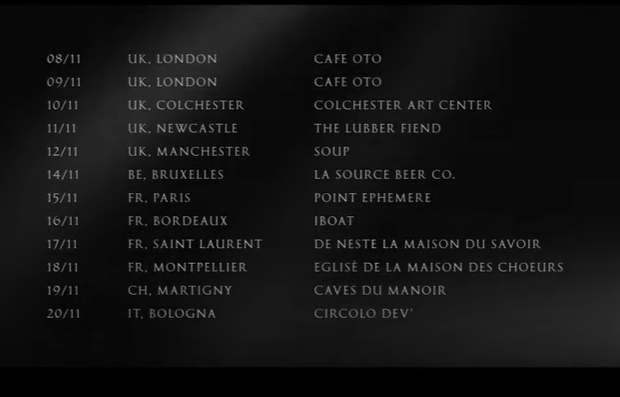
With some encouragement from Steve, talking of Van Wissem’s musical palindromes performed on the lute and the fact that they would form an interesting combination with Jarboe – “She’s still got an amazing voice. Sx” – the idea became a reality: “Bought tickets for Jarboe…Looking forward to a night of culture! Might take some stuff in case she’s up for signing, then get Michael Gira to sign it when I see him!” Well, a sneaky kind of way of getting the two legends back together, something that would be very unlikely to happen in real life – Ahh, the best laid plans…


Jarboe, P Emerson Williams and Jozef Van Wissem live at The Lubber Fiend, Newcastle-Upon-Tyne, Friday 11th November 2022
It’s Friday 11th November 2022 and I’m in Newcastle, north-east England, with my wife, who I have persuaded to come with me to see musical legend Jarboe. The Lubber Fiend is an obscure, ‘right on’ but very ‘rough ’n’ ready’ community venue in the heart of ‘the toon’, across the main traffic artery, which is tough to navigate as a pedestrian, then down a dimly-lit back street.
This is what we were promised:
“Jarboe draws from a variety of sources: childhood in the Mississippi delta and New Orleans, life in NYC’s east village during the post no-wave scene as member of the band Swans, university studies in literature and theatre, global travels, and a history of extensive recordings, collaborations (Attila Csihar, Blixa Bargeld, J.G. Thirlwell, Merzbow, PanSonic, Chris Connelly, Neurosis and many others), and performances (clubs, theaters, art galleries, cathedrals, festivals, live radio, television, film).
Jarboe’s voice and music is known for bold experimental as well as melodic diversity and expression. Over the course of her life through efforts in past and present disciplines, Jarboe explores the rebuilding / reinventing of identity and the elemental structures of personae.

Jozef van Wissem is an avant-garde composer and lutenist playing his (their) all black, one-of-a-kind custom-made baroque lute all around the world. The titles and the nature of his (their) works often have a Christian-mystical appeal and the music he (they) creates is simply timeless. In 2013 van Wissem won the Cannes Soundtrack Award at the Cannes Film Festival for Jim Jarmusch’s “Only Lovers Left Alive “. In December 2017 Jozef van Wissem was invited to perform the madrigal depicted in Caravaggio’s painting The Lute Player (1596) at the Hermitage museum of Saint Petersburg.” [5.]

It’s a dimly-lit venue, offering a choice of non-gender-specific toilets, and mostly empty in the main performance space, with not many places to sit. We perch on a bench near the side wall and wait. There’s a thin, wasted-looking older guy wearing a ‘Filth’ t-shirt, a reminder of when Swans were famously noisy, industrial – back in the 1980s…Eventually, the stage is taken by a tall enigmatic character with long hair, dressed in black with a crucifix round his neck and a black lute in their hand, inscribed with ‘ex mortis’ – perhaps some padre from the church of the forgotten? Perhaps, they are (the non-binary) Jozef Van Wissem, ‘liberator of the lute’. Ordinarily, Jozef may have been the ‘warm-up’ or ‘support’ act, but they have more of the persona of the undead, appropriate given their association with vampires – having written a soundtrack for the 1922 German silent expressionist film ‘Nosferatu’ and having collaborated with Jim Jarmusch on the soundtrack for the 2013 inventive film about musical vampires ‘Only Lovers Left Alive’. They stayed mostly silent between tracks, staring into the crowd, playing repetitive, minimalist pieces on the classical instrument of their choice. It was a mesmerising, unforgettable performance. Jozef was happy to greet fans after the show at the merchandise stall, and sign my CD booklet for ‘Only Lovers…’ as well as ‘Nosferatu – Call Of The Deathbird’, which I duly purchased on the night. I asked them about his lute and they said it had been hand-made, but that their lute maker of choice had gone blind and they’d had to find another – oh, the pain and sadness of this life!
Blow-by-blow accounts were duly delivered to my friend:
“Hi Steve, At The Lubber Fiend – just saw Jozef Van Wissem play, met him (them) and got a couple of things signed. Jarboe on next. E”
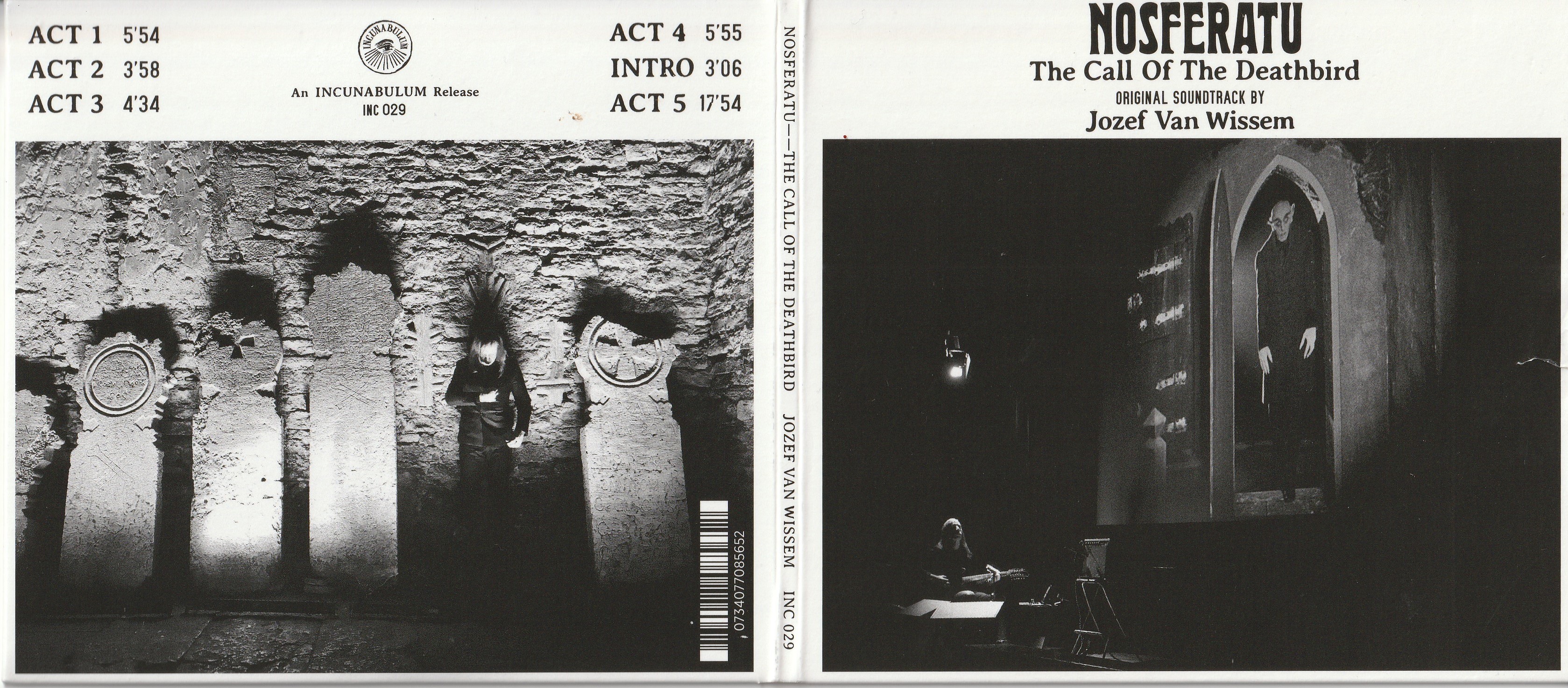


Gira and Jarboe were two Swans who, unlike their Anitadaen namesakes, did not mate for life, having gone their separate ways in the late nineteen-nineties…Both forged driven careers thereafter, both as solo artists and collaborators, the former fronting Angels Of Light and reinvented line-ups of Swans, the latter mainly concentrating on her own projects and singing with bands as diverse as Blackmouth and Neurosis. I could have been forgiven for expecting Jarboe to sing for at least part of her set, as her 2020 release ‘A Tupla’ contained plenty of her distinctive vocals, and even the video trailer for the tour included her singing tones, but it was not to be that night in Newcastle, as the alternative diva stuck to the medium of spoken word…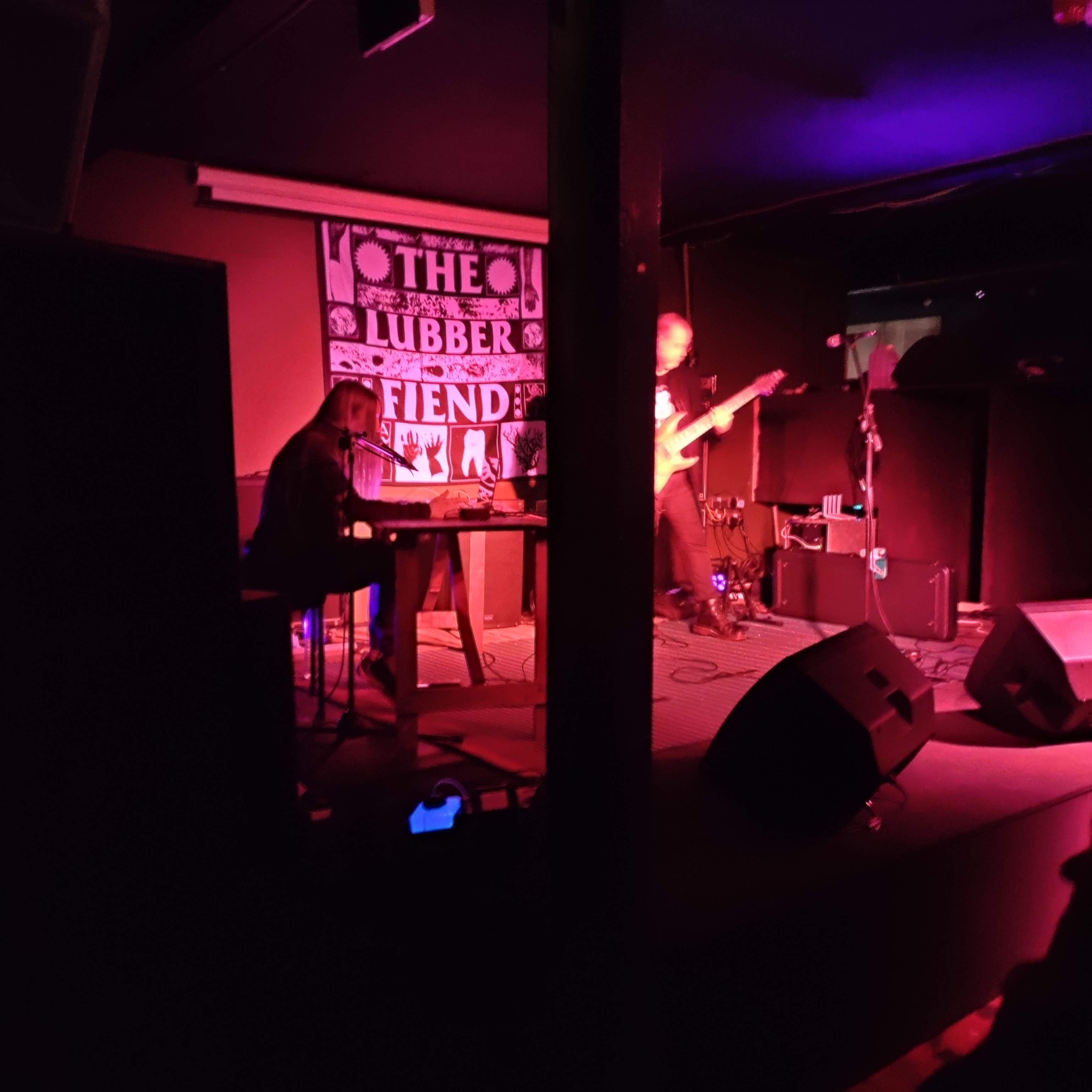
This was my somewhat damning verdict of the Jarboe’s performance, in the aftermath:
“Jarboe was pretty awful – no interaction, no singing, just talking…and the guitarist on stage with her (may have been P Emerson Williams) wasn’t up to much either so we walked out before the end. Never mind, Jozef was good…”
As it turned out, my wife was less-than-impressed with Jarboe’s spoken word rhetoric over the droning tones of P Emerson Williams electric-guitar-and-effects-driven soundscape and neither was I, so we left part way through that performance:
“No singing to the point we left for sure. I had an open mind because I knew there would be an element of ‘performance art’, but it just wasn’t enjoyable. Her ‘stage entrance’ was bizarre too – she wheeled a cabin bag round the front of the stage as if she’d just got off a flight, or been shopping – no drama or introduction…I had also asked the ‘merch’ guy whether Jarboe would be doing signing/greeting and he sounded doubtful so I didn’t think it was worth hanging around.”
Michael Gira live at Cottiers, Glasgow, Friday 25th November 2022


A couple of weeks have passed since the Jarboe gig…I’ve persuaded my friend D that it’s a good idea to go and see Michael Gira, the creative force behind Swans, even though he’s not a fan of ‘art rock’, ‘noise rock’, however you would wish to pigeonhole the band’s best-known creative output. D is, however, a fan of folk and folk-rock, and this will be a guy on stage with just an acoustic guitar and his voice, so how far away from that can it be? D is a good friend and we are faithful gig companions, enjoying catching up on life and exploring new experiences. We meet in the transformed Queen Street Station, now a glass bubble with panoramic views out to George Square and the grid pattern cityscape that is Glasgow City Centre. It’s there we catch the train out to the suburb of Milngavie (the ‘avie’ pronounced ‘eye’), now a commuter town about ten kilometres from the heart of the metropolis.

We walked the route along the Allander Water then the River Kelvin between Milngavie and Glasgow which was billed as ‘feels surprisingly rural when walked from North to South, with the hustle and bustle of the city becoming more apparent the further along you go…Expect a mixture of earth paths, pavements, cycle tracks and some mud!’ That was about right in reality…We didn’t encounter a soul. Call me paranoid, but I wore steel-toe-capped boots and carried a disguised weapon – a fold-up black umbrella! It was Scotland of course, so the ubiquitous rain jacket, cap and sunglasses were all necessary apparel to have! From the pastoral landscape along the Kelvin, we eventually approached the edge of the city, heading off the riverside path and wandering through housing estates, past shopping complexes deeper into the urban sprawl, targeting Maryhill train station but ending up at Summerston in the rain. The train took us into the west end, bedraggled hungry walkers with muddy boots to be wiped off, to become semi-respectable culture vultures, devourers of authentic Chinese cuisine and gig-goers…
It was a tour of former churches…Gira had played St. Patrick’s Catholic Church in Belfast, Northern Ireland on 23rd, St. Ann’s Church in Dublin, Ireland, on 24th before coming here to Cottiers, the former 19th century Dowanhill Parish Church in Glasgow.

The month before, wandering the streets of Oslo, Norway, I came across posters suitably pasted on to the graffitied hoarding of a construction site, with the black and white face of Gira obscured by his hands, finger poking into his eye, either in some kind of despair or just a way of hiding a face he’d rather we’d not see. These were advertising his solo performance at the Kulturkirken Jakob in the country’s capital, ironically the city home to the black metal movement which spawned a spate of church burnings and a catalogue of recordings sold out of the basement of the ‘Helvete’ (Norwegian for ‘Hell’) record shop which was run by ‘Euronymous’, guitar player for black metal pioneers Mayhem, and infamously stabbed to death by fellow black metal musician Varg Vikernes, from Bergen. Whether Gira is familiar with the anti-Christian background to that alternative scene in Norway I do not know, but his choice of venues is likely to be more about atmosphere than any kind of statement.
It’s been Gira’s business plan typology over recent years – to play a solo tour and release limited edition ‘product’ through his vehicle, Young God Records, in order to generate cash to fund the recording and production of the next Swans album. ‘The Beggar’ was no exception. As well as this tour, Gira released the demo album ‘Is There Really a Mind?’ in February 2022.

Kristof Hahn’s support set was good – an unsettling feeling throughout, and Hahn’s stage demeanour plays to this (Gira later gives thanks to ‘that little ol’ Kristof Hahn’ – oh, how he joked : ). The Swans member revealed his slide guitar was tuned to the oboe part on ‘If There Is Something’ from the first Roxy Music album, then proceeded to play a sinister version of it! His ethereal soundscapes in this blue-lit spectral ecclesiastical architectural backdrop are a fine build-up for the stripped back sermons that are to come.
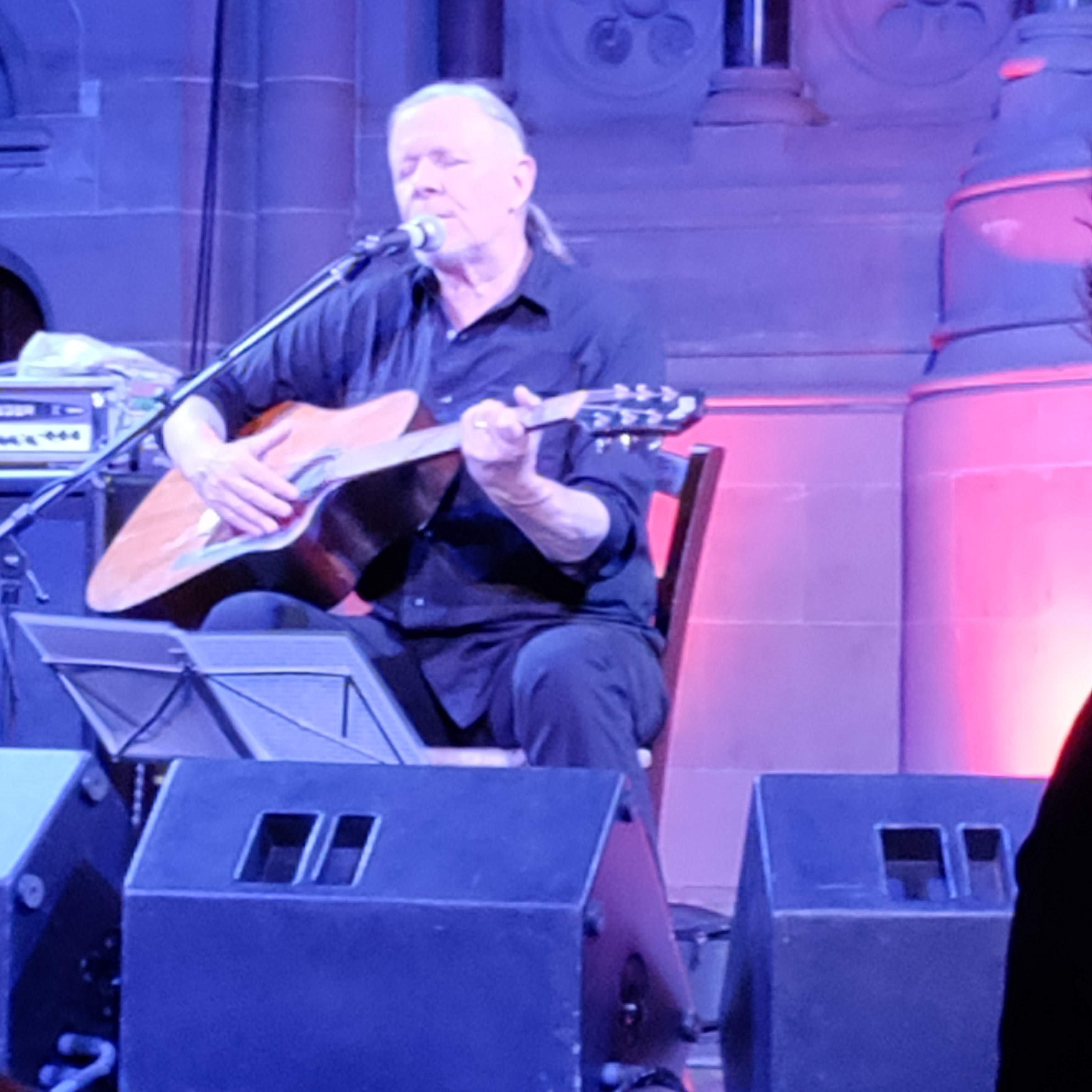
Michael Gira delivered a very intense performance, including songs from the soon-to-be released Swans album ‘The Beggar’. Gira’s imposing persona on stage included policing those audience member who dared to try and photograph him – Those who were caught were offered a ‘Paddington stare’ and a ‘when you’re finished’ retort, as the artist cut off where he’d played to and waited for the interruption to cease before starting again.
Gira opened with ‘The Parasite’ and it was as if a very dark priest had taken to the lectern with leather-bound bible in hand to deliver an uncompromising sermon of doom. Online, there’s a recording of that song from the same tour that a fan sneaked from a gig in Italy (if Gira had seen them, they’d have been in trouble!) – It seemed so much scarier when watching Giral play it live in Glasgow…
He finished with ‘New Mind’, opener of Swans 1987 classic ‘Children Of God’ and ‘Blind’, from his 1995 solo album ‘Drainland’, both familiar to Swans fans, so a welcome treat to end with.
I was fortunate to meet Mr Gira after the show (both of us masked up) – as Steve said ‘He loves his fans’ – and he signed a number of CD booklets from my Swans collection that I had brought. Thanks Michael!
Likely Michael Gira setlist:
The Parasite
The Memorious
Unforming
The Beggar
When Will I Return? (Swans song)
Two Women (Angels of Light song)
New Mind (Swans song)
Blind (Swans song)
Saturday 29th April 2023 – Death of a friend…
I didn’t know it yet, but you were already dead, I messaged you about a crippled black phoenix, perhaps some kind of premonition…
Darkness is coming
The loneliness and despair
A long cold black night

A very sad day – My good friend since school days, Steve M, passed away suddenly in his home up north. A lifelong Swans fan, he was looking forward to the release of ‘The Beggar’ – It’s so strange to think that he will never hear it…We had messaged back and forth about last year’s Gira gig and the upcoming Swans tour. Jarboe and Michael Gira, if this reaches you by chance, you have lost one of your strongest and most loyal supporters…
Goodbye my old friend
Peace be with you in heaven
Rest after this life
Swans ‘The Beggar’, released on Friday 23rd June 2023
The long-awaited follow-up to 2019’s well-received opus ‘Leaving Meaning’ arrived on the planet…and, as I am ‘old school’ in preferring hard copy, complete with artwork that you can touch and booklets that you can read, the two-disc CD arrives through my letterbox, familiar in its cardboard and printed red graphic, similar to recent Swans packaging. As might have been predicted, the recordings of the songs are very different from the very bare bones of the versions performed by Gira back in November of the previous year, although the opening track ‘The Parasite’ was the opener of his set at Cottiers in Glasgow:
“Breathe my breath into your head
Righteous, pure and sour with death
Here I am, just empty skin
There is no way out, there is no way in
Feed on me, feed on me,
Feed on me now”
The five other members of the band that accompany Gira on this musical trip – Kristof Hahn, Larry Mullins, Dana Schechter, Christopher Pravdica and Phil Puleo – are augmented by a further five guest musicians, creating an eclectic, sometimes lush, sometimes psychedelic, sometimes swirling, sometimes rocking out, always engaging soundscape. Occasionally, the music sounds like Swans ‘of old’, as in ‘Los Angeles; City Of Death’, the pounding, insistent beat and backing vocals somewhat reminiscent of the Jarboe era. At times, this recording is absolutely sublime – just have a listen to ‘The Beggar Lover (Three)’ and see how those orchestral vocal parts move you…
‘The Beggar’ tracklisting:
Disc One
The Parasite
Paradise Is Mine
Los Angeles: City of Death
Michael Is Done
Unforming
The Beggar
No More of This
Ebbing
Why Can’t I Have What I Want Any Time That I Want?
Disc Two
The Beggar Lover (Three)
The Memorious
St. Luke’s website, Sunday 23rd July 2023
Fast forward to 23rd July 2023, and I’m looking forward to seeing Swans at St. Luke’s in Glasgow – I’ve checked their website and it irritates me enough to contact the venue:
“Having looked at the listing on your website, I would note that the information is out of date and misleading – The photo is from a much earlier incarnation of the band and includes Jarboe, who was a member from 1986 to 1997. The text is from the early days of the band and doesn’t refer at all to recent albums or the current lineup. Hasn’t the promoter or Michael Gira sent you a press pack?”
A friendly reply comes back saying that they’ll contact the promoter and will update soon, which takes place – Thanks Eilidh at St. Luke’s!
The listing is furnished with the current EU/UK tour poster and this inspiring description:
“Unleashing a tempest of raw, unbridled emotion, SWANS emerges as an enigmatic force in the realm of experimental rock. Formed in the early ’80s, this genre-defying band has been sculpting soundscapes that push the boundaries of music and delve into the depths of the human psyche. Their groundbreaking performances and hauntingly intense compositions have earned them a devoted global following, and on the 16th of August, they will take to the stage @ Saint Luke’s!
Led by the visionary Michael Gira, SWANS’ music is an ever-evolving journey, transcending traditional genre constraints. From their early post-punk origins to their ventures into industrial, avant-garde, and beyond, each phase has borne witness to their relentless exploration of sonic territories. Their live shows are immersive experiences, where the audience is plunged into a swirling vortex of sound and emotion, carried away on waves of unyielding intensity and catharsis.
With a penchant for hypnotic repetition, sweeping crescendos, and otherworldly harmonies, SWANS’ performances are known to leave audiences transfixed, their souls laid bare by the sheer force of the music. Unafraid to confront the darkest corners of human existence, their lyrics and sonic tapestries grapple with themes of love, pain, spirituality, and the human condition, stirring something primal within each listener.
SWANS’ visit to Saint Luke’s promises to be an extraordinary evening, where time will lose its meaning, and the boundaries between performer and audience will blur.” [4.]
Swans live at St. Luke’s, Glasgow, Wednesday 16th August 2023

The trip over was the wrong kind of eventful, as I had a few mishaps on the way, as I wrote in this haiku at the time:
Running for the train
Fell down then lost my wallet
Bad things come in threes…
Made it on to the train to Glasgow Queen Street, though…palms of my hands grazed, my leg hurts from the impact, feel shaken and bruised…
Going to Saint Luke’s Church
In the east end of Glasgow
A rare gig by Swans
St. Luke’s is just around the corner from the iconic Barrowlands, the ballroom-turned music venue that has hosted so many classic gigs and is so well-loved by many bands. From the path in front you can see one of the entrances to the Barrowland market, known locally as ‘The Barras’.
There’s a man sitting outside the venue on a bench smoking a fag (that’s British-English for ‘cigarette’ for the benefit of you North Americans out there). He looks a bit like Swans’ guitarist Kristof Hahn…Hold on, he is Swans guitarist Kristof Hahn! Being as I am, I decide to engage “I hear there’s a good band on tonight”, I call out to him, “Are you going to see them?” He gets up and walks over. “I hear they’re loud”, he says, smiling, “too loud for me”, he laughs, still puffing on his cigarette. The lady in the couple in front tries to take a surreptitious selfie with Hahn in it over her shoulder, much to the musician’s amusement, who joins them to chat and allow a proper photo. I ask Kristof about another tour of former churches and he says that, yes, this is something Mr. Gira requested of the promoters.
Support came from Norman Westberg, a case of ‘keep it in the family’, as the man himself is a former guitarist with Swans, during their incarnation from early eighties to early nineties and after they reformed in 2010. Outside, Kristof Hahn had corrected me when I mistakenly said ‘Westerberg’ to another fan asking who was supporting – must have been recalling musician Paul Westerberg. Norman Westberg also played on Jarboe’s solo recordings and offshoot projects from the band, a kind of musical glue for this disjointed sculpture that I am trying to concoct here. Norman is an enigmatic stage presence, using his guitar and effects to create hypnotic and ethereal soundscapes which form a perfect introduction to the evening.
Like the bird, there are many extinct species of Swans and some that are still living. Gira has previously said that he named the band after the bird, because their majestic look and ugly temperament seemed to suit at that time. Things develop over time, but another analogy is that swans look calm on the surface, whilst paddling hard beneath the water, which can be applied to the band’s live performance – even in the maelstrom of building a cacophony of sound, there appears to be calm, as there is in the eye of a hurricane, with Gira as shamanic conductor somehow completely at home raising his hands with his eyes closed, in a spiritual trance…
“He sounds a bit like Jim Morrison”, I remark to my friend D, as Gira dredges up memories of listening to ‘When The Music’s Over’ or ‘Celebration Of The Lizard’, perhaps some of the lyrical imagery reminiscent of The Lizard King’s poetic visions, but definitely in the tone of Gira’s voice and the way that he is barking out the words.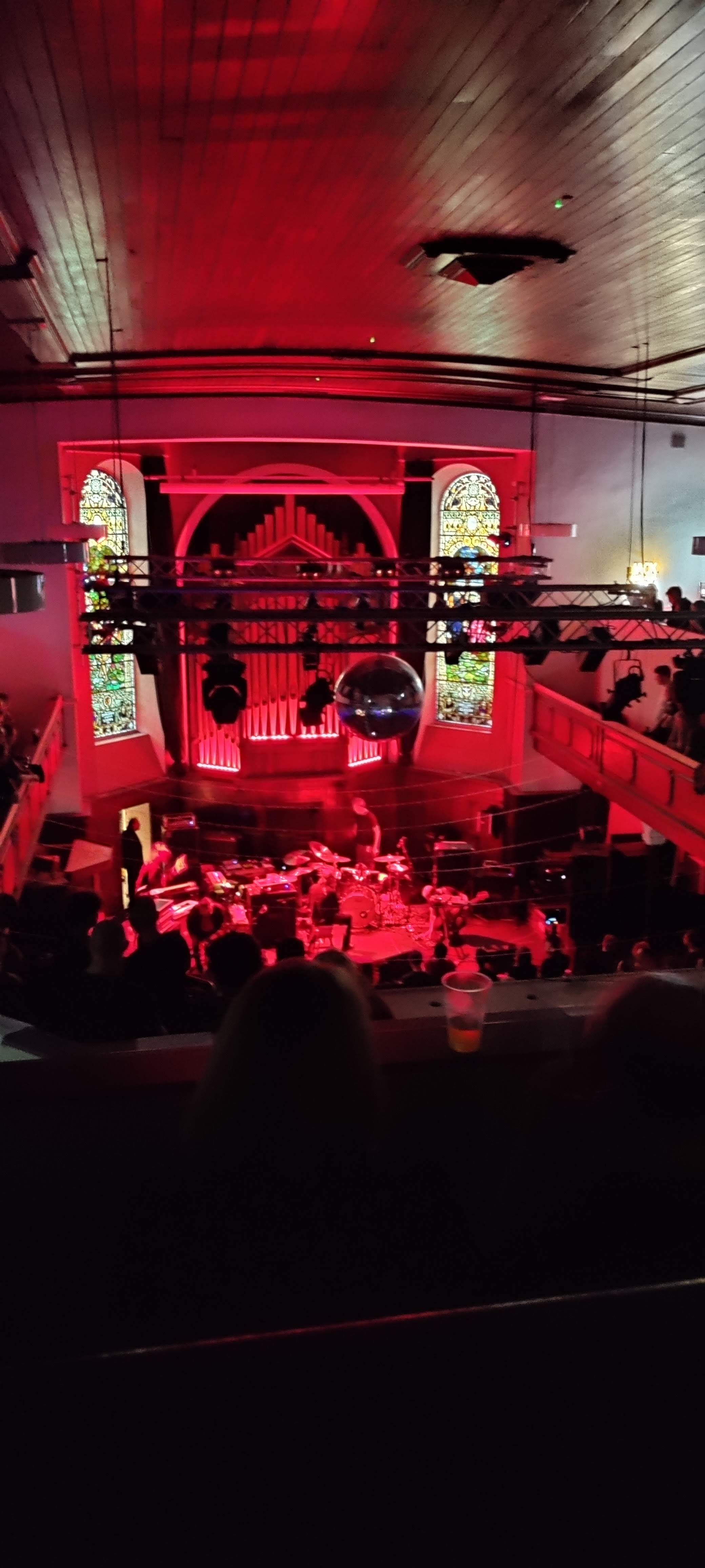
The band played four songs from new album ‘The Beggar’: ‘Ebbing’, ‘No More Of This’, ‘The Memorious’ and ‘The Beggar’, interspersed with three from the last release ‘Leaving Meaning’ – ‘The Hanging Man’, ‘Cathedrals Of Heaven’ and ‘Leaving Meaning’, along with ‘Introduction’ and ‘Birthing’. Sometimes it’s hard to remember which track they are playing, as the music drifts into freeform jam territory, the band zoning out as their conductor builds them up and eventually draws them to a close. It certainly feels very different to the chilled, spacey vibe of much of the recorded album ‘The Beggar’ but, with Swans, there has always been that distance between the studio product and what transpires on stage. It’s been a fitting end to Act Four of this lengthy and dysfunctional theatrical production, as we file out of the old church into an East End Glasgow night, D and I going our separate ways, east and north. After such an esoteric experience, the gritty real life walk back to Queen Street station takes on a dream-like quality. We’re coming to the end of my slightly psychotic, umbilical diary of musical memorabilia, filed in my mind under ‘Swans, experimental rock band from New York City’, days torn from pages in 2022 and 2023. It’s late on a Wednesday night but still there are people everywhere, ant-like in their scurrying around this electric-lit urban sprawl, comfort found in a rattling train compartment rocked into broken sleep as we head back east into the night…

Swans setlist:
Introduction
(with break before The Beggar)
The Beggar
The Hanging Man
Ebbing
The Memorious
Cathedrals of Heaven
No More of This
Leaving Meaning
(played in full with no break before Birthing)
Birthing
Swans personnel:
Michael Gira – vocals, acoustic guitar
Kristof Hahn – lap steel guitar
Larry Mullins – drums, orchestral percussion, Mellotron, vibes, keyboards, backing vocals
Dana Schechter – bass guitar, lap steel, vocals
Christopher Pravdica – bass guitar, sounds, keyboards, vocals
Phil Puleo – drums, percussion, vocals
References and photos:
1. Photos: Author’s own
2. Swans Setlist:
https://www.setlist.fm/setlist/swans/2023/saint-lukes-glasgow-scotland-73a59ad5.html
3. Michael Gira ‘The Parasite’, live in Bologna, Italy: https://youtu.be/wP_TKgWpEuA
4. Swans at St. Luke’s event listing: https://www.stlukesglasgow.com/events/swans/
5. Jarboe event listing: https://www.skiddle.com/whats-on/Newcastle-on-Tyne/The-Lubber-Fiend/Jarboe–Jozef-Van-Wissem/36116061/?hasNewTicketBox=1&reviews=1#recommendedEvents
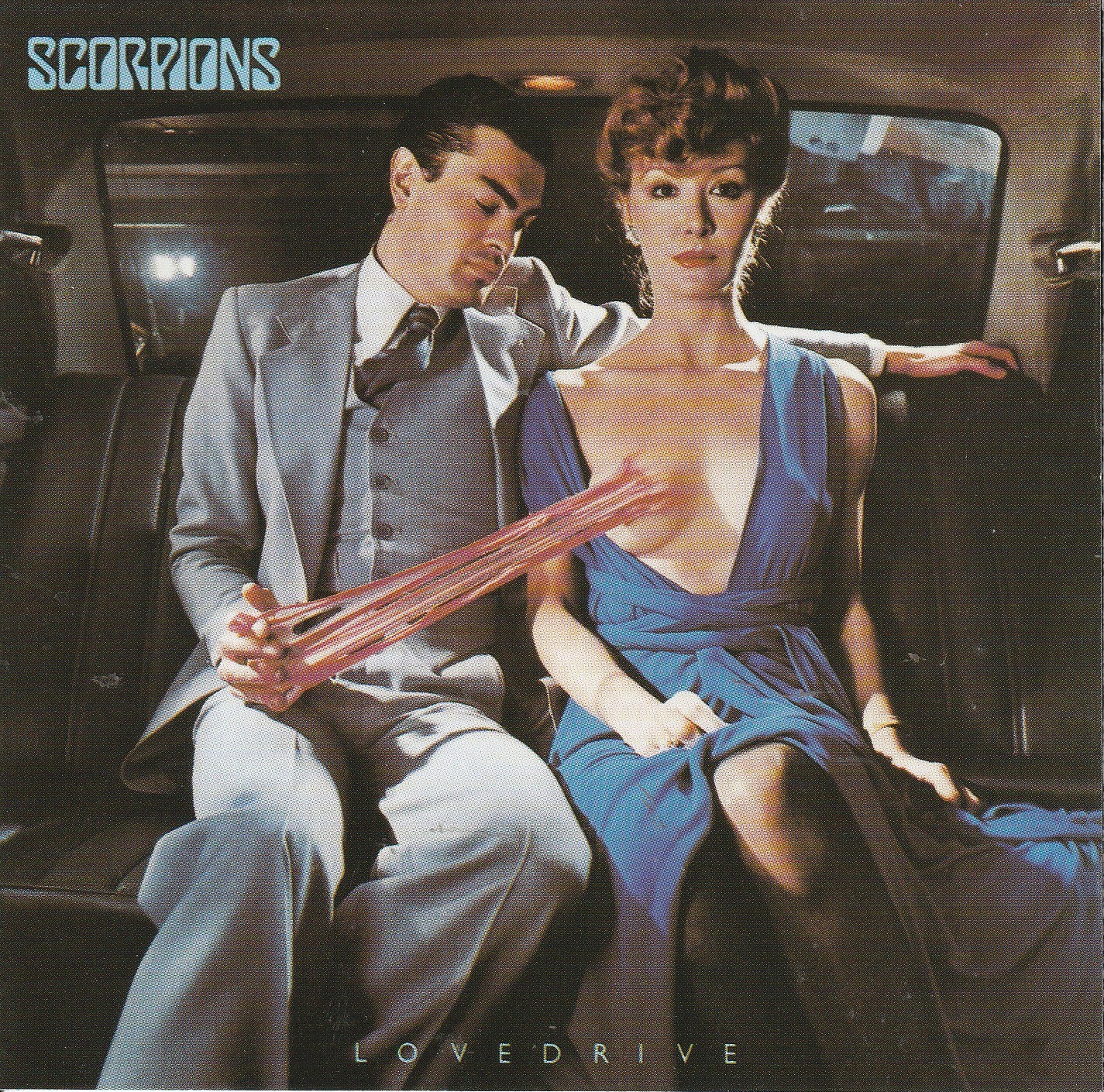






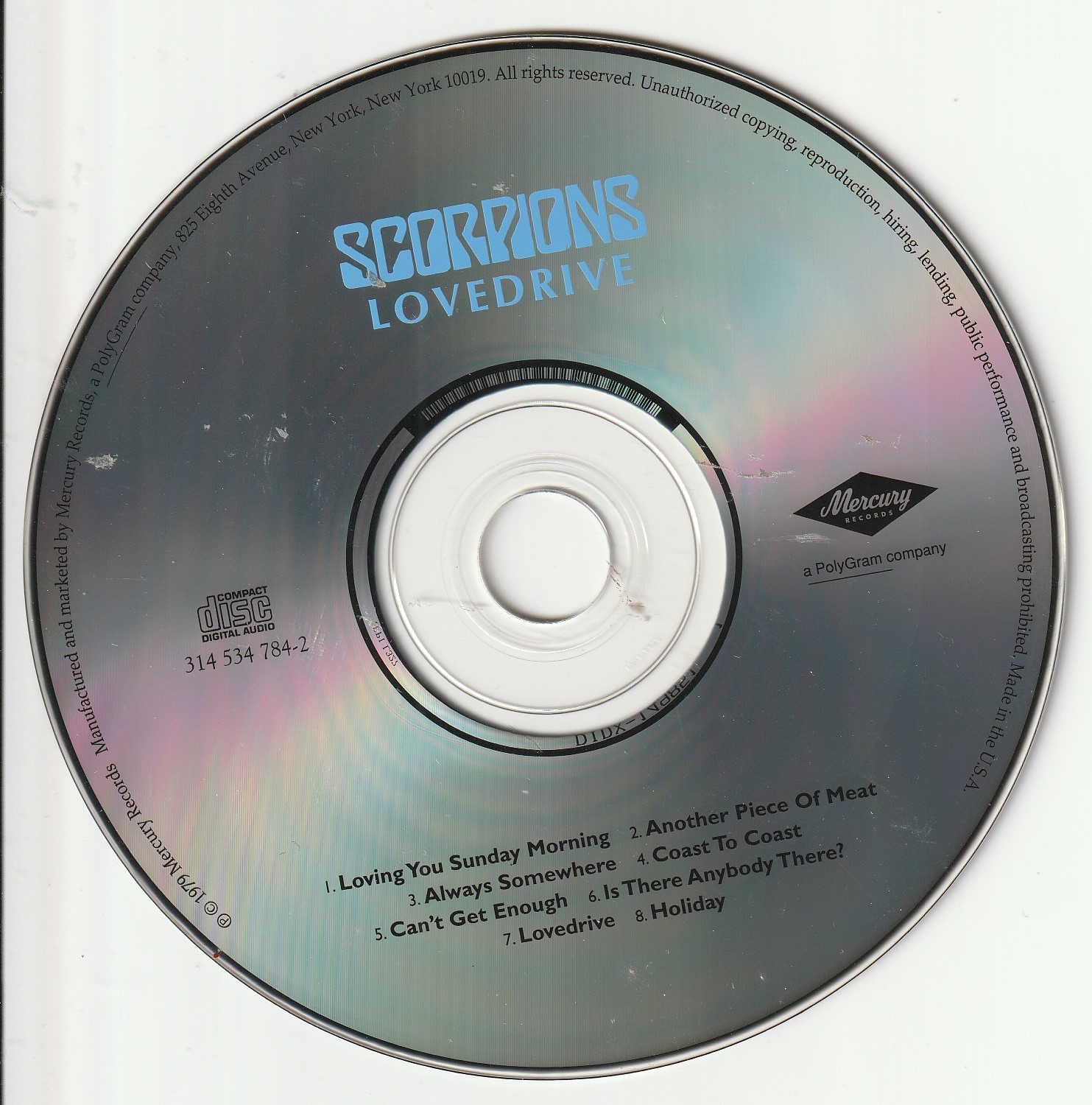
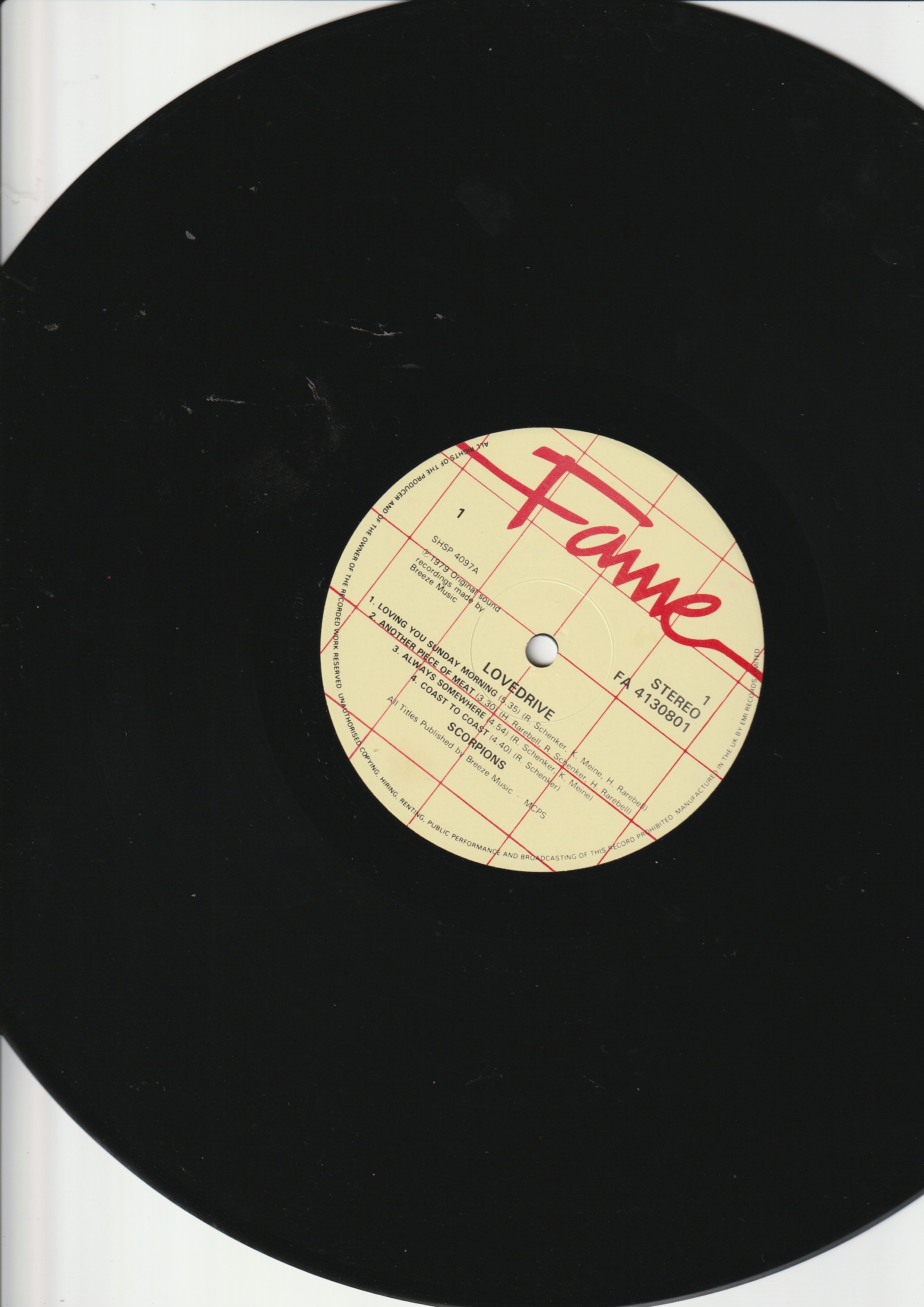
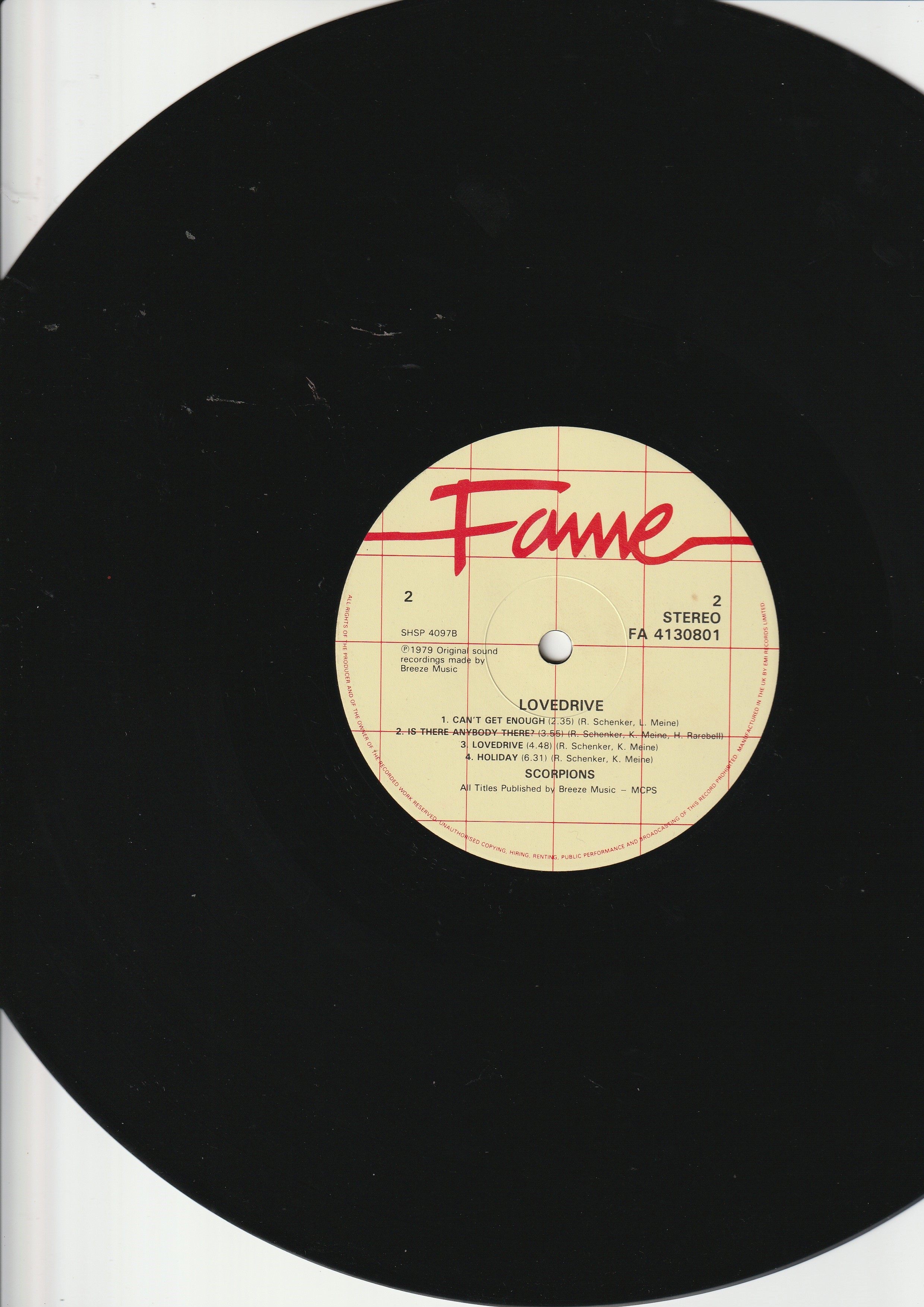
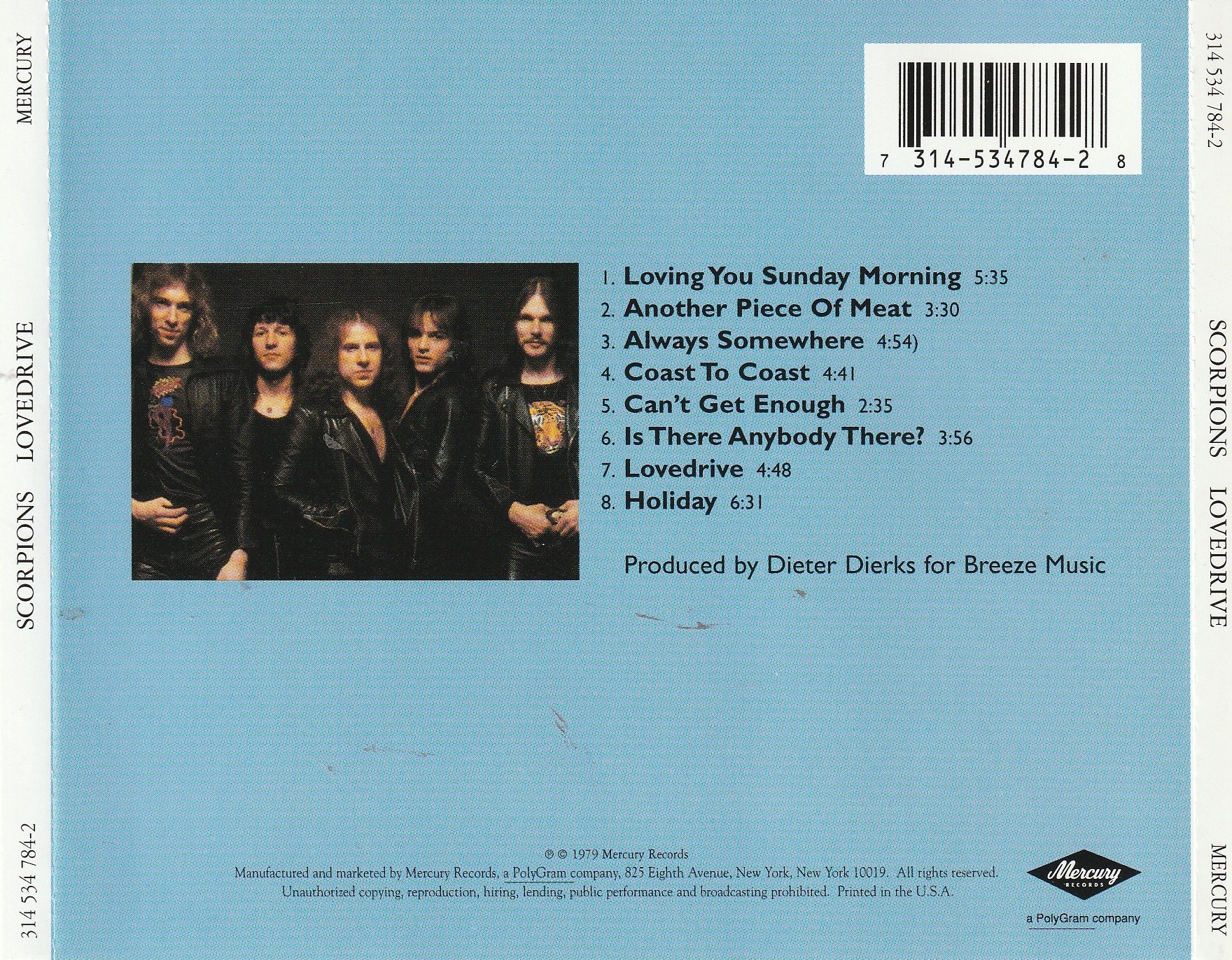










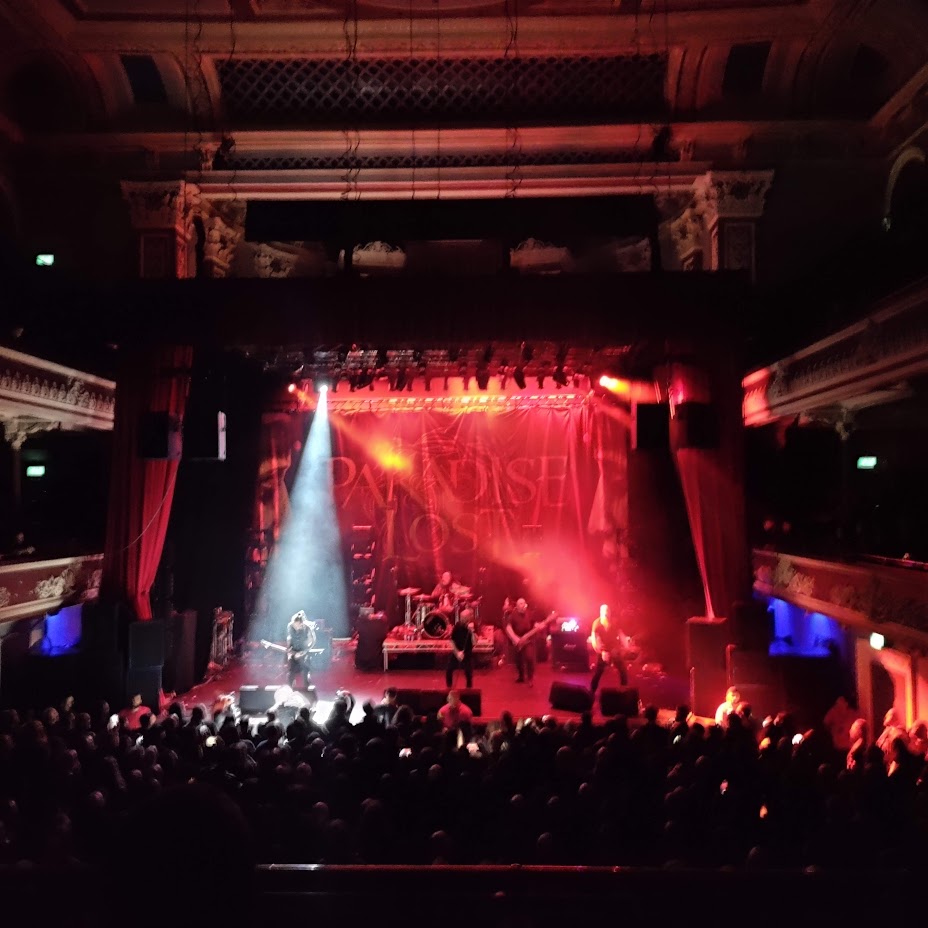
 [5.]
[5.]



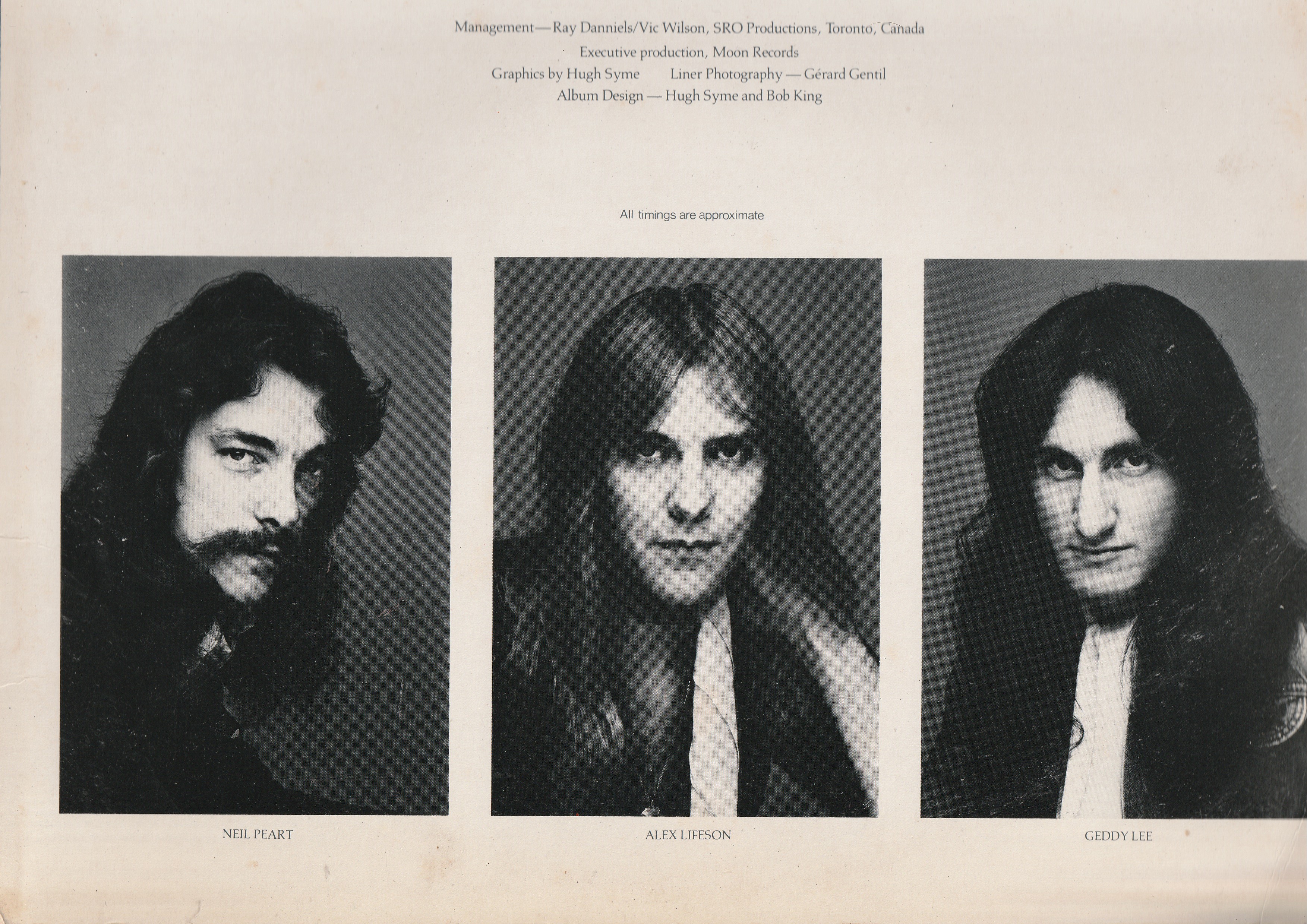
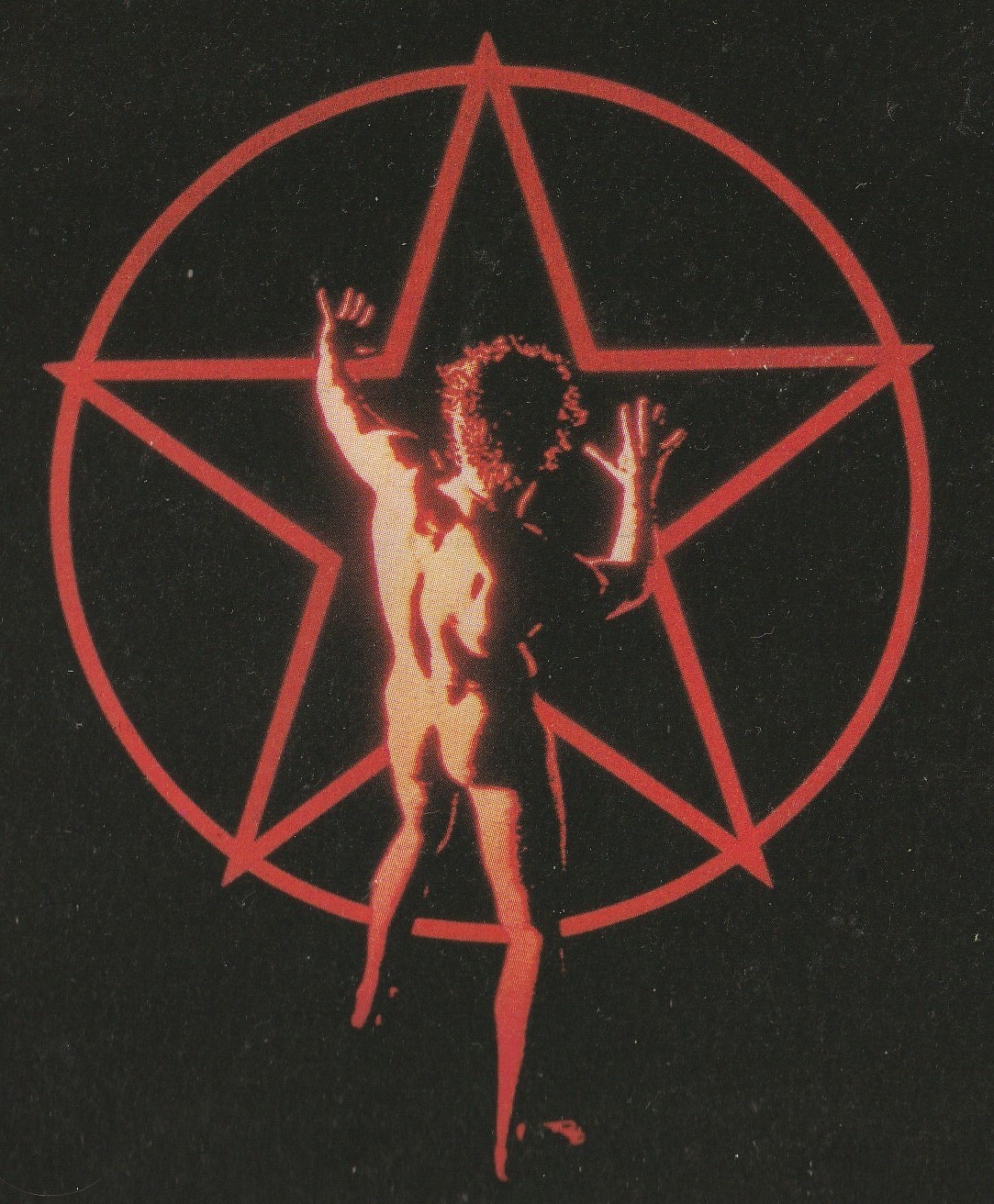




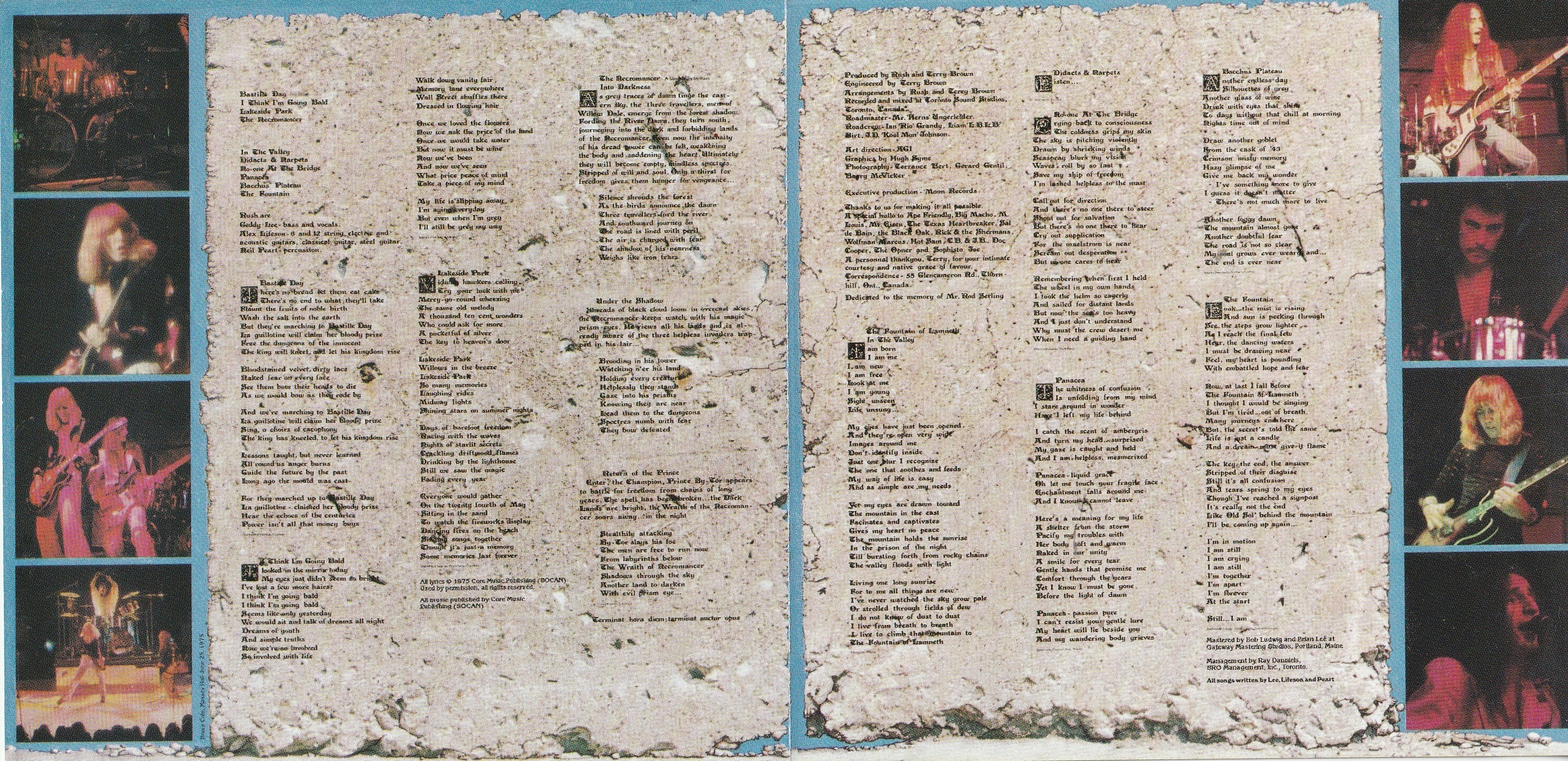





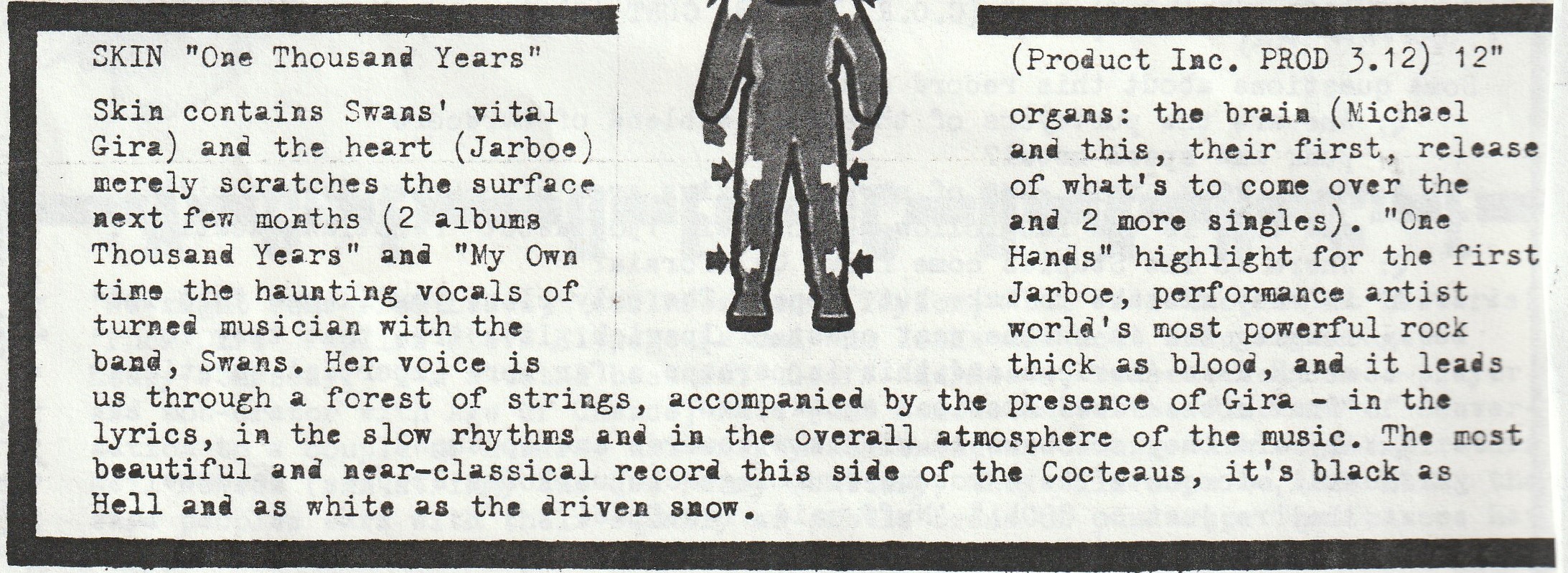







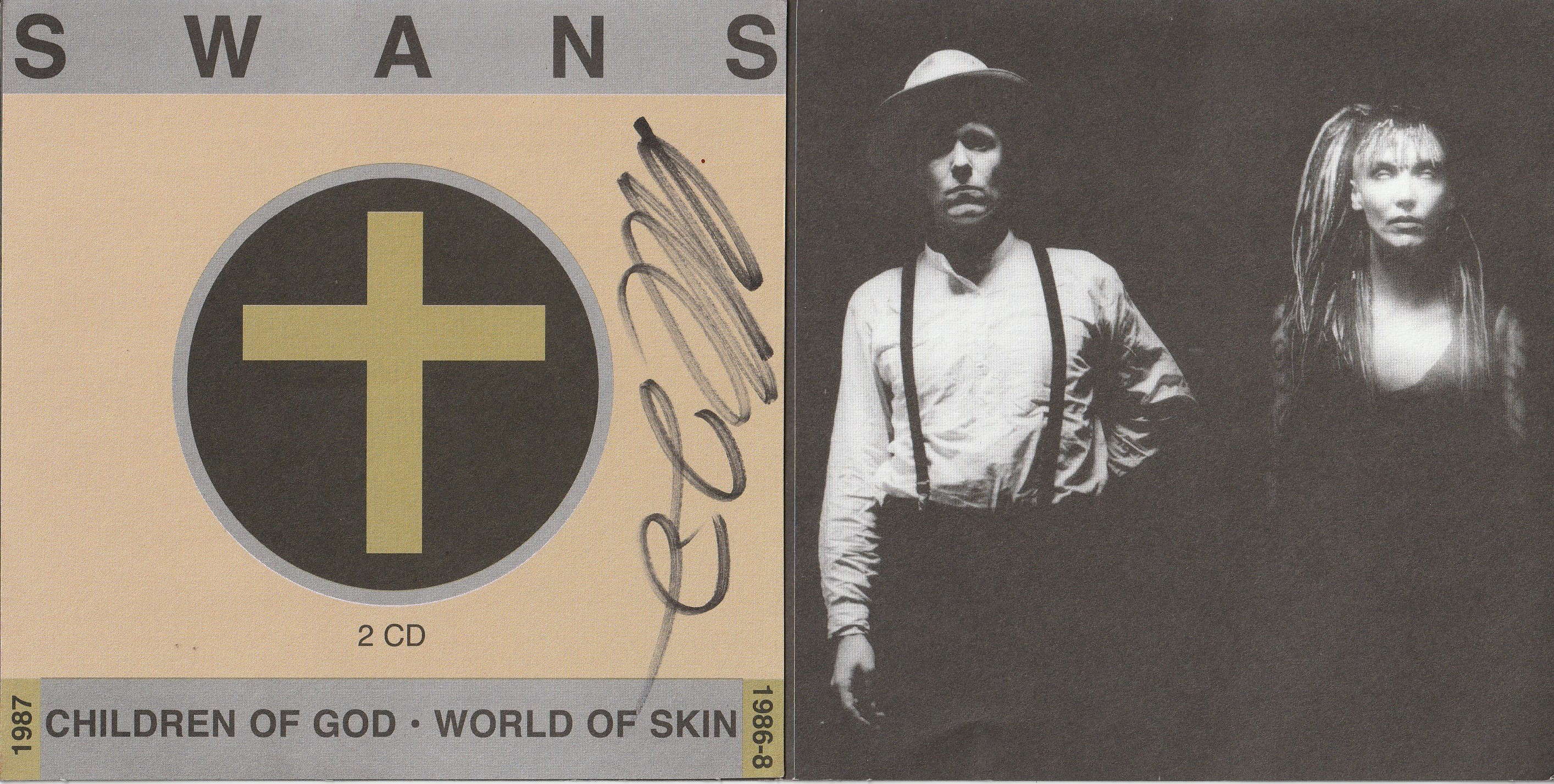
 This was part of some kind of pilgrimage for me, four acts of a very strange play, acted out over ten months, with its roots deep in the past and focus on an unknown dystopian future…To understand it, we have to go back to the Swans period between the late 1980s and the late 1990s, a time when performance artist Jarboe was Michael Gira’s co-collaborator and lover. From ‘Children Of God’ through to ‘Soundtracks For The Blind’, the fires of creativity were burning brightly in New York City. Jarboe and Gira’s ‘side project’, initially called Skin, then World Of Skin, also produced some wonderful material, the 1990 album ‘Ten Songs For Another World’ being my favourite. It’s a cornucopia that I often revisit, for musical and spiritual nourishment…Here is my recollection of a timeline of a series of somewhat disparate, but somehow connected, events that took me from autumn 2022 through to the end of summer 2023, a journey that takes us to post-industrial landscapes on rivers running through northern cities…
This was part of some kind of pilgrimage for me, four acts of a very strange play, acted out over ten months, with its roots deep in the past and focus on an unknown dystopian future…To understand it, we have to go back to the Swans period between the late 1980s and the late 1990s, a time when performance artist Jarboe was Michael Gira’s co-collaborator and lover. From ‘Children Of God’ through to ‘Soundtracks For The Blind’, the fires of creativity were burning brightly in New York City. Jarboe and Gira’s ‘side project’, initially called Skin, then World Of Skin, also produced some wonderful material, the 1990 album ‘Ten Songs For Another World’ being my favourite. It’s a cornucopia that I often revisit, for musical and spiritual nourishment…Here is my recollection of a timeline of a series of somewhat disparate, but somehow connected, events that took me from autumn 2022 through to the end of summer 2023, a journey that takes us to post-industrial landscapes on rivers running through northern cities…





























